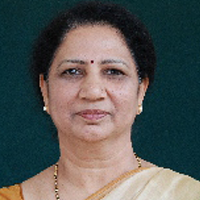Dakshayini R. Patil and Mamatha P. Raj
Tekton
Volume 6, Issue 1, March 2019
pp. 40 – 57
 Dakshayini R. Patil is currently Associate Professor at BMSCA, Bangalore. Her B.Arch. is from BVB Hubli (1999), M.Arch. in Urban design from RVCE Bangalore (2010) with Doctoral thesis on Pedestrian mobility of elderly citizens in residential neighborhoods. She has 15 years of professional experience in Architecture & Urban design and 8 years of teaching & research. She has worked with Sobha developers, RSP Pvt. Ltd. and Hindu society of Minnesota, Minneapolis. She has 15 publications in prominent National & International refereed journals and Conferences.
Dakshayini R. Patil is currently Associate Professor at BMSCA, Bangalore. Her B.Arch. is from BVB Hubli (1999), M.Arch. in Urban design from RVCE Bangalore (2010) with Doctoral thesis on Pedestrian mobility of elderly citizens in residential neighborhoods. She has 15 years of professional experience in Architecture & Urban design and 8 years of teaching & research. She has worked with Sobha developers, RSP Pvt. Ltd. and Hindu society of Minnesota, Minneapolis. She has 15 publications in prominent National & International refereed journals and Conferences.
dsjoshi08@gmail.com
 Mamatha P. Raj is currently Director of BMSCA, Bangalore. Her Doctorate from Mysore University (2008) was on ‘Metamorphosis of CBD of Bangalore, as a response to challenges of Digital Era’. With over 30 years’ teaching & professional experience, she currently guides five doctoral theses under VTU, Belagavi. She is a distinguished Chairperson, advisory & Member of various Professional & Academic bodies. She has over 50 publications at National & International levels. Her accolades include National awards for teaching & research in the profession.
Mamatha P. Raj is currently Director of BMSCA, Bangalore. Her Doctorate from Mysore University (2008) was on ‘Metamorphosis of CBD of Bangalore, as a response to challenges of Digital Era’. With over 30 years’ teaching & professional experience, she currently guides five doctoral theses under VTU, Belagavi. She is a distinguished Chairperson, advisory & Member of various Professional & Academic bodies. She has over 50 publications at National & International levels. Her accolades include National awards for teaching & research in the profession.
director.bmsarch@gmail.com
ABSTRACT
The premise of this paper is to explore relationship between natural processes and development dynamics in an urban context based on Ian McHarg’s ideology of ‘Design with Nature’. It investigates the expansion of a city along the fringes of an ecological protected zone – a National Park and impact of urbanization on its ecosystem. Bannerghatta National Park (BNP) in Bangalore city (also Bengaluru), about 22 km to the South of the city is witnessing the stress of urban expansion in various ways. Development around protected areas must be understood and managed in the context of its ecological and cultural landscapes. Aim of this study is to streamline such an urban expansion with a holistic planning approach. Analysis of the issues and impacting factors outline the reasons for conflicts between people-park and people-animals. Many factors dictate the fringe planning and design – ecology, topography, hydrology, drainage & vegetation. Additionally culture, socio-economic status and circulation patterns impact the region as well. Results of the study of BNP and its fringe development indicate these multiple factors of influence and demand an integrated approach towards sustenance of the bio-diversity while creating urban expansions that are intrinsically liveable in nature.
KEY WORDS:
Urban Ecosystem, National Park, Buffer Zones, Planning & Design

